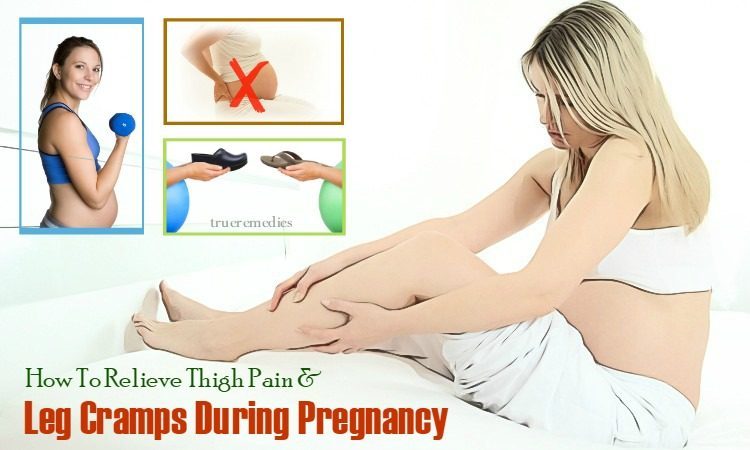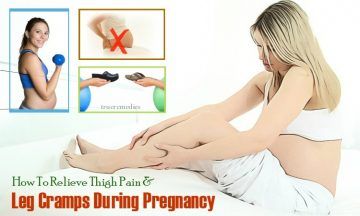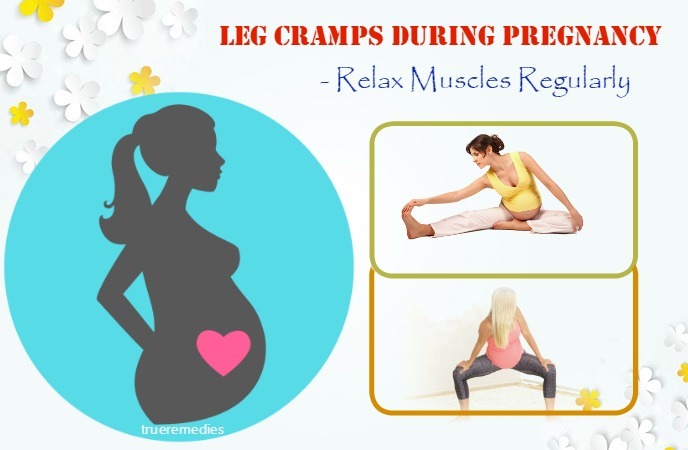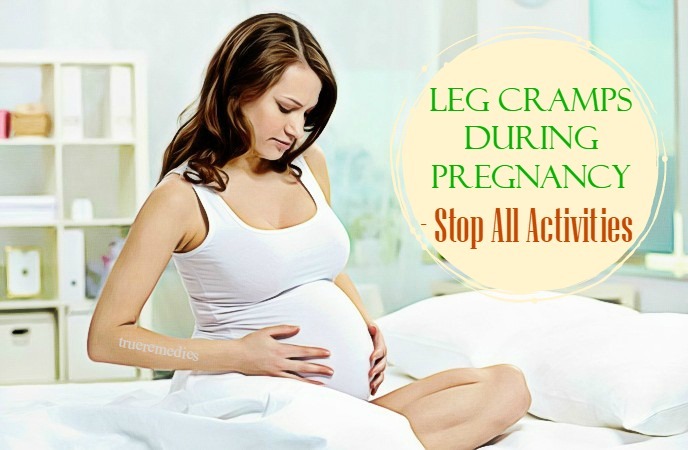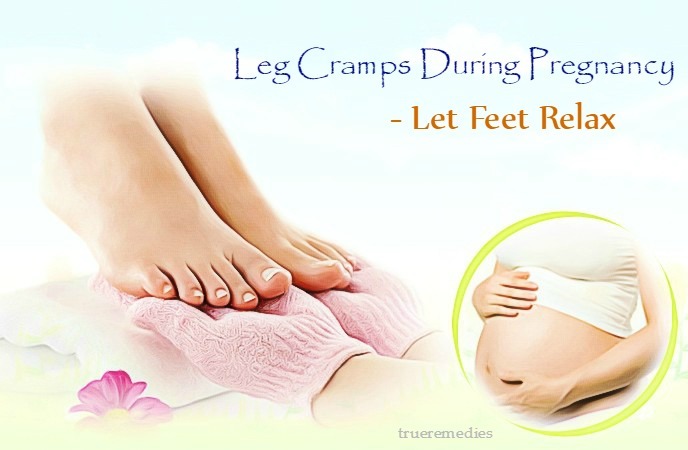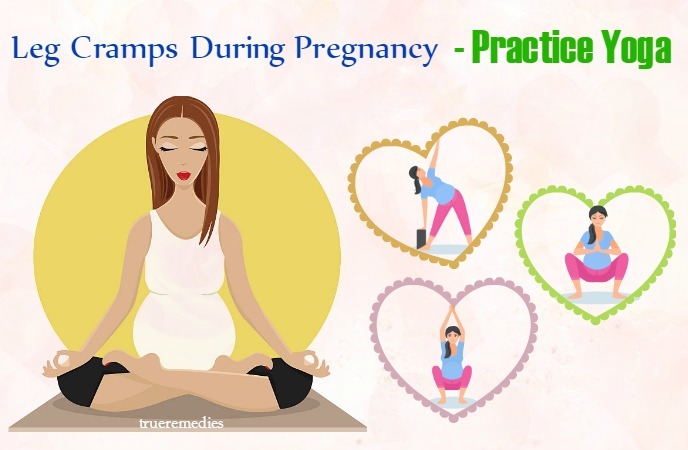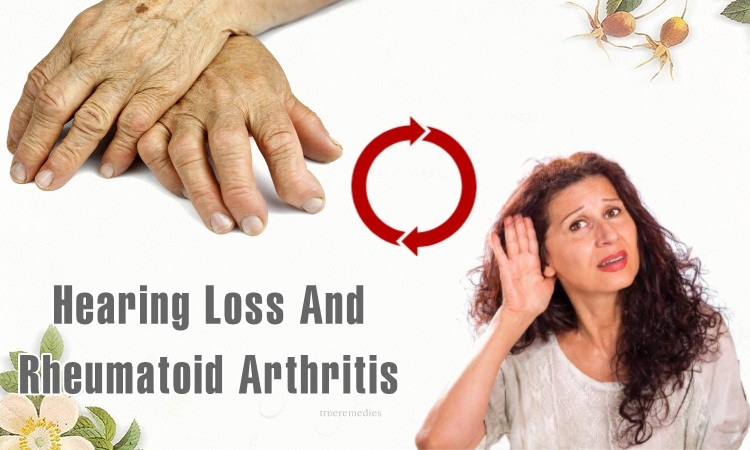Contents
- What Are Cramps During Pregnancy?
- Causes Of Cramps During Pregnancy
- Symptoms Of Cramps During Pregnancy
- Who Is At Risk?
- When To See A Doctor?
- Can You Prevent Leg Cramps During Pregnancy?
- Leg Cramps During Pregnancy
- 1. Relax Muscles Regularly
- 2. Exercise On A Regular Basis
- 3. Avoid Standing Or Sitting For Too Long
Cramping usually occurs unexpectedly in pregnant women. Most pregnant women suffer from this condition. Cramping causes intense pain in about three minutes. However, if the cramps are severe, it can be a warning sign of the risk of miscarriage. About 25% of pregnant women have suffered this consequence. Therefore, if you are pregnant, you should pay special attention to cramps. This article will provide you with ways to help you overcome this problem. However, to understand more about cramps during pregnancy, let's take a look at the information below.
What Are Cramps During Pregnancy?
Cramping is a sudden muscle spasm that causes severe pain in muscles. The uterus is a muscle. Whenever your uterus is stimulated (by a water-filled bladder, strong exercise), the uterus's natural response is contraction. This condition makes the patient unable to move. Cramping is one of the conditions that pregnant women often experience. This condition is caused due to many causes. But whatever the cause, this condition also causes pain for pregnant women and it needs to be treated as soon as possible. Although this is a common condition, in severe conditions, it can cause some serious consequences like miscarriage. So do not ignore it.
For pregnant women, cramps usually occur during the early stages of pregnancy. Cramping can be a sign that you are pregnant – that is when your egg fertilizes in the uterine wall. Most pregnant women experience some cramping during the first 16 weeks of pregnancy. Pregnancy makes the woman feel very tired. Frequent cramps will make the health and psychology of pregnant women unstable. This is not good for them and their fetus. Women who have had miscarriages need to pay special attention to cramping. Pregnancy is always a memorable event. So, you should stay healthy, reduce stress, and get regular checkups to help your pregnancy become an interesting experience.
Pregnant women often get pimples during pregnancy and many people think that this condition is related to cramps. However, this is totally a wrong thought. This is because when you are pregnant, your embryo will go into the wall of the uterus. This explains why women often get pimples when they are in menstruation.
What Are Common Causes Of Cramps During Pregnancy?
Here are common causes of this condition [1] [2]:
- Weight Gain Too Fast
In normal people, cramps are considered a phenomenon, but in pregnant women, they are considered a disease. Cramps not only cause pain and discomfort for pregnant women but also affect their daily activities, especially sleep, affecting the health of both them and the baby. One of the main causes for this condition is weight gain too fast. As body weight is increasing, the muscles in the legs are subjected to greater pressure, resulting in cramps. That is why pregnant women often get cramps at night.
TrueRemedies Partner Solutions

Need a Help from the Leading Expert Online, Available 24/7?
They’re all here and ready to answer your questions online or by phone. Keep asking questions until you get the answer you need.
- Ligaments And Muscles Are Stretched
During pregnancy, the mother's uterus extends to create a good environment for the fetus to develop. Then the ligaments and muscles must stretch to support the uterus. Cramping is common in the first three months of pregnancy. When the veins supply blood for the uterus is suppressed, the contraction occurs, causing pregnant women to feel uncomfortable and painful in the lower abdomen.
- Dehydration
Morning sickness causes some symptoms like headaches, nausea and vomiting. This makes the body of pregnant women very susceptible to dehydration, electrolyte imbalance and lack of nutrients. This is also the reason pregnant women often have muscle stiffness [3].
- Lack Of Calcium
Cramps may be due to calcium deficiency. Calcium deficiency is common in pregnant women. During pregnancy, the mother provides nutrients, including calcium, to the fetus. Therefore, the demand for calcium of pregnant women is very high. Once calcium is not provided enough, their body is deficient in calcium. Then cramping is unavoidable.
- Corpus Luteal
One of the causes of cramps in pregnant women is the formation of corpus luteal. Corpus luteal forms on the ovaries and ovulate before fertilization. The main function of this cyst is to produce enough progesterone to nourish the embryo before the placenta develops.
- Strong Activities
Cramps often involve the excessive use of muscles, resulting in tired muscles. For pregnant women, frequent physical activities can make them prone to cramping.
- Potassium Deficiency
Low potassium levels sometimes cause cramping, although potassium deficiency is associated with muscle weakness. As you know, pregnant women are often prone to nutritional deficiencies, including potassium, so they often cramp because of this cause.
- Sodium Deficiency
Low levels of magnesium in the blood increase the stimulation of both nerve endings, while stimulating the muscles and causing cramps.
What Are Common Symptoms Of Cramps During Pregnancy?
Here are common symptoms of this condition:
- You often have sudden cramps even when you stand up, cough or laugh.
- Encountering cramps too many times in an hour (even more than 5 times).
- Dizziness, nausea and vomiting.
- You have a lot of acne. This situation can become very bad.
- Pain in the abdomen or at the top of the shoulders.
- High body temperature.
- You always feel unwell.
- You often have trouble in urinating.
- You do not have the typical signs of pregnancy.
- Vaginal bleeding.
You may experience other symptoms not mentioned. If you have any questions about the signs of the disease, please consult your doctor.
Who Is At High Risk Of Cramps During Pregnancy?
Most pregnant women often experience cramping. However, pregnant women with severe morning sickness and those with fibroids are more likely to develop this condition.You can control this problem by minimizing risk factors. Please see your doctor for more information.
When To See A Doctor?
Because cramping is a common condition during pregnancy, you do not need to worry too much about it. However, if your condition worsens, i.e. you have more than five cramps per hour, you need to see a doctor. In addition, you should see a doctor if the cramps accompany the symptoms listed below:
- You always feel very anxious. Seeing your doctor for a health check will help you deal with your anxiety.
- Too many periods of menstruation.
- The body temperature is constantly rising.
Besides, if you have any questions, please consult your doctor. Each person's condition is different, so please consult your doctor to select the most suitable option.
Can You Prevent Leg Cramps During Pregnancy?
Certainly, you can try. To do it, you had better slowly flex and release your feet a few times before bed nightly. This will help keep your leg cramps during pregnancy under control.
Futhermore, wearing good quality compression stockings, and avoiding standing or sitting for long periods of time might also decrease the risk of cramping.
Mangesium and calcium supplements could support you too. Drinking adequate water (from 2-3 litres per day) but in small quantities also helps you prevent leg cramps during pregnancy. Avoid drinking too much water at a time as gulping down too much water could result in heartburn, which is another common problem during pregnancy. Remember to warm up before exercise to prepare yourself for stretching your muscles.
Above is useful information about thigh pan and leg cramps during pregnancy. Hopefully, such information can help you get the most out of this situation. As you can see, cramps cause a lot of pain and discomfort. Therefore, treatment should be done as soon as possible. Here, we'll show you how to relieve thigh pain and leg cramps during pregnancy. Take a look at TrueRemedies.com!
Top 18 Tips On How To Relieve Thigh Pain And Leg Cramps During Pregnancy
1. Relax Muscles Regularly
This is the first tip on how to relieve thigh pain and leg cramps during pregnancy. Cramping is a sudden contraction in the muscles, which can cause severe pain. Muscle relaxation is one of the most effective ways to prevent or reduce cramps during pregnancy. Focus on muscle relaxation in your calves and feet, and remember to stretch your muscles before going to bed, as well as before and after exercising. Avoiding posture requires lying on your back. As you know, for pregnant women, lying on their back makes them prone to cramping. You can try some basic muscle relaxation exercises as follows:
Exercise 1. Stretch The Muscles Of Your Legs When Sitting
To do this exercise, you need to follow these steps below:
- Prepare 2 chairs and a towel
- Sit on a chair and place your right foot on the other chair
- Use a towel to wrap around the soles of the feet
- Start pulling the towel towards you
- Stop in this position for 30 seconds, then do the same with your left foot
You will feel relaxed in the muscles of the legs and feet. Please do this exercise 2-3 times a day to get the best results.
Exercise 2. Stretch The Muscles Of Your Calf When Standing
To do this exercise, you need to follow these steps below:
- Wear non-slip shoes
- Stand on a flat surface and face the wall so that the body is about 60-90 cm from the wall
- Put your hands in front and place your hands against the wall
- Slowly lean forward until you feel the muscles relax
- Finish the movement by placing your hands against the wall until you are straight again
You should do this exercise 2-3 times a week to prevent or reduce cramps during pregnancy.
2. Leg Cramps During Pregnancy – Exercise On A Regular Basis
To relieve thigh pain and leg cramps during pregnancy, you should exercise regularly. Light exercises can help you improve blood circulation and reduce cramps in your legs, while improving abdominal muscle strength and preparing you for giving birth. Ideal exercise during pregnancy is good for heart pumps. In addition, exercises should also ensure that the flexibility is maintained without putting too much pressure on the fetus.
There are many exercises that can be practiced in or around the house. Gentle exercises such as walking around for 30 minutes are a great way to go outdoors. Walking keeps you fit without shaking your knees and ankles, while enhancing your heart rate if you're walking fast. This exercise is safe for pregnant women and can be included in your daily routine. Strength training exercises such as squats, push-ups, or leg lifts can be easily practiced in the living room or bedroom.
Sports centers often offer programs specifically designed for pregnant women, such as underwater aerobics or yoga for pregnant women. These activities can help maintain the strength and flexibility of the muscles without putting pressure on joints like heavy workouts. Make sure to consult a healthcare professional before starting any exercise program.
3. Avoid Standing Or Sitting For Too Long
Avoiding standing or sitting for too long is important in regards to thigh pain and leg cramps during pregnancy. You should combine activities with rest. Make sure you take a break to walk or relax if your work requires you to sit a lot. Besides, you should lift your feet up as often as possible. Lifting your feet up can help dissolve fluid in your feet. Take advantage of the breaks to sit and lift your feet up if you have to stand all day. Spin your ankles and wiggle your toes when sitting, eating or watching TV. This also helps the muscles to be active, limiting the appearance of cramps.
4. Leg Cramps During Pregnancy – Take Appropriate Footwear
To relieve thigh pain and leg cramps during pregnancy, you need use appropriate footwear. Choose comfortable shoes, which help support your feet and give you a sense of comfort. You should also consider using compression stockings. This type of socks reduces swelling, increases blood circulation in the legs and ankles, reducing or preventing cramps. You can wear shoes with long pads (hardware that surrounds the heel). Besides, wear pressure socks when sleeping to reduce cramps in the legs. Your legs will thank you for this.
5. Stop All Activities
If you are exercising or doing activities that lead to muscle spasms or cramps, stop all activities, no matter what activities are. Muscle cramping can occur when you are exercising or while doing housework. As soon as the muscle contraction signal appears, you have to stop the work and find a way to handle it. Try to massage the contraction muscles. Massage activities help to relax the muscles and increase blood circulation to this area. Avoid continuing to maintain activities that, in your opinion, increase the pressure on your foot, resulting in pain and cramping.
6. Leg Cramps During Pregnancy – Stretch Cramped Muscles
Cramps usually occur suddenly and unpredictably with repeated episodes of muscle contraction. To quickly repel cramps in your feet or toes, stretch your cramped muscles. That way, you can pull the muscle out of the position causing cramps. Stretching your cramped muscles is most effective when it is maintained for a minute or more, until the cramps begin to slow down / stop. You may have to repeat this position when you notice signs of cramps.
For pregnant women, the soles of the feet and toes are the most prone to leg cramps. Squeeze the soles of your feet with your toes, pulling your toes upward until you feel the stretch on the soles of your feet. Hold this position for 30 seconds and then relax. If the cramps show signs of reversal, repeat this position. You can also try roller tennis under the foot. When standing or sitting, you can roll the ball under your toes, soles and heels. This helps you prevent cramps.
7. Take A Walk
This sounds strange when it comes to thigh pain and leg cramps during pregnancy, but it works. As soon as the cramps start to decrease, take a walk. Keep walking to avoid back cramps. Cramps may continue to occur until the muscle in the affected area is completely relaxed. This means that you may need to maintain standing and / or walking for at least three minutes or longer, until you feel your cramped muscles are completely relaxed and they are no longer painful. Try to put your weight on the affected leg, be ready to walk if the pain recurs.
Once the pain has resolved, continue to stretch your muscles until you feel your muscles relaxed. At the same time, stretch the calves to the muscles, tendons and ligaments attached to the heel so that they have the necessary relaxation. Even if the calf is not cramped, once the pain is first controlled, stretching the calf will be helpful to you. Continue to stretch cramped muscle about 1-2 minutes to ensure the cramp has disappeared completely. You can also perform exercises that are introduced in the first tip to stretch the affected muscles.
8. Leg Cramps During Pregnancy – Foot Massage
Foot massage is beneficial to relieve thigh pain and leg cramps during pregnancy. After stretching your feet or toes when cramping, remove your socks and gently massage your feet. To do this, you can follow the steps below:
- Stretches feet and toes
- Massage the foot and identify the cramp muscles
- Massage the affected area with your thumb
- You may need to use more force to soften the muscle
- Continue to massage until cramped muscles begin to relax
- Pull your toes upward when you massage if they begin to bend or the soles of your feet are cramped
Follow a circular motion or stretching motion while massaging. Continue the massage for two to three minutes or until you feel your cramped muscles are relaxed and they no longer feel pain.
9. Cold Compress
Not all pregnant women can apply cold compress. As soon as you apply this tip and notice that your body temperature drops sharply, you should stop immediately. If this is not your case, then this tip is for you. It will help you quickly get rid of cramps. However, this is only a temporary measure. If you want to prevent cramps, you need to exercise regularly. However, in some emergency situations, cold compress is still very useful. To do this, you can follow the steps below:
- Prepare a clean towel and ice cubes
- Use this towel to wrap ice cubes
- Apply this towel to the affected muscle area
Avoid applying ice directly to skin so as not to hurt the skin. For the foot area, you can apply this tip by using your feet to roll a bottle of cold water. Sit on a chair when you do this to make sure you do not fall over when using your feet to roll the bottle.
10. Leg Cramps During Pregnancy – Warm Compress
No wonder, this should definitely be mentioned in this list of tips on how to relieve thigh pain and leg cramps during pregnancy. Warm packs can be used to treat a variety of health problems, from muscle aches to cramps. Although you can buy a hot pack at the pharmacy, you can also make it yourself with the simple materials available in the home. Warm packs can help relieve pain during menstruation and pain caused by cramps. Be sure to follow safety warnings to protect yourself from burns. To make a warm pack, apply the following steps:
- Prepare a pair of long clean socks, some rice, beans or dried oats.
- If you want a warm pack with a soothing aroma, you need to prepare some extra mint, cinnamon or herbs you like. You can use herbs in the kitchen, herbal tea bags or essential oils. Try using lavender, chrysanthemum, sage or mint to increase the ability to soothe cramped muscles.
- Pour rice, beans or oats into the socks. Add herbs if you want.
- Tie the head of the socks. Depending on the time you want to preserve the warm pack, you can temporarily or permanently sew the socks. Tightening the sock helps keep the material within a short time and you can reuse the sock. Or you can sew the sock to make a permanent warm pack.
- Put the warm pack in the microwave for about 30 seconds. After 30 seconds, you can feel the warmth from the pack. If you are satisfied, you can take it to use. If you want a warmer pack, continue keeping it in the microwave for about 10 seconds until you reach the desired warmth. The optimum temperature should be between 21 and 27 degrees Celsius.
- Place the warm pack on the cramped area.
You should prepare a warm pack in advance and whenever you notice signs of cramps, warm the warm pack and apply it to the affected area. Surely you will quickly feel good soon after applying this tip.
11. Let Feet Relax
This is the next one in this list of thigh pain and leg cramps during pregnancy. Cramps can be caused by several causes, including overwork. For pregnant women, increasing body weight makes them feel tired. Therefore, if they have to work too much, they will be prone to cramping. Therefore, if you are pregnant, always make sure your feet are relaxed. If you need to work, take frequent breaks so that your feet can be relaxed. The foot is a complex structure of the bones, tendons, ligaments and muscles. Any part of the foot may be overworked or injured, resulting in pain, muscle aches and cramps. Resting is usually effective in this case.
There is no standard time for this rest. You need to rely on your condition and follow any doctor's instructions. Take advantage of every opportunity for your feet to rest when possible. If you have a specific injury, have your feet rested according to your doctor's instructions.
12. Leg Cramps During Pregnancy – Drink Enough Water
Get enough water if you want to relieve thigh pain and leg cramps during pregnancy. Dehydration is a common cause of foot and toe cramps. As we said above, morning sickness causes many pregnant women to have dehydration. Therefore, they are prone to cramping. Drinking plenty of water is good for both pregnant women and their fetus. Pay attention to urine color. If urine is dark yellow, you may not drink enough water. Drink water throughout the day, both before and after exercise to ensure your body has enough water. Trying to drink sports drinks to enhance the electrolyte due to electrolyte imbalance is also a common cause of cramps. You should also place a cup of water next to your bed in case the cramps occur at night.
13. Set Up A Balanced Diet
Pregnant women are prone to nutritional deficiencies. Nutrition plays an important role in ensuring that the body and muscles maintain normal functioning, while reducing problems such as cramping. The lack of potassium, calcium and magnesium make you very prone to cramps. Therefore, let’s add foods like bananas, dairy products, fresh vegetables, beans and nuts in your diet.
Don’t skip: List Of 12 Worst Fruits To Avoid During Pregnancy
14. Leg Cramps During Pregnancy – Prenatal Massage
Massage can help improve circulation and reduce swelling. It should become part of your prenatal care regime. Pregnant women need special attention during the massage. You must let your massage therapist know that you are pregnant so that you can lie on your side during the massage. Make sure the massage therapist is allowed to massage the pregnant woman. Some doctors are reluctant to recommend massage in pregnancy because there are too many requirements [4].
15. Consider Taking Vitamin Supplements
The next one in this list of thigh pain and leg cramps during pregnancy is taking vitamin supplements. Some studies have shown that magnesium supplements may help prevent cramping during pregnancy. You should also consider eating foods rich in magnesium such as whole grains, beans, dried fruits and nuts. In addition, you can also add magnesium to the body through functional foods.
Avoid functional foods which supplement calcium. Although adequate calcium intake is important, there is no evidence that excess calcium can help prevent cramping during pregnancy. In fact, a study has shown that pregnant women who take calcium supplements have no improvement in cramps compared with those taking placebo. Be sure to consult your doctor before taking any supplements.
Learn more: What To Eat When Pregnant – List Of Foods
16. Leg Cramps During Pregnancy – Epsom Salt
How to relieve thigh pain and leg cramps during pregnancy at home? Consider having a bath with Epsom salt. Pregnant women could use Epsom salt whilst soaking in a tub. Epsom salt can dissolve easily in water. Athletes use this method to relieve sore muscles. Epsom salt is a crystallized form of sulfate and magnesium, two naturally occurring beneficial minerals. This substance has been in use for many centuries for soothing leg cramps and skin problems like minor sunburns or cuts. Many pregnant women also find that Epsom salt can soothe stretching skin, calm down the soul, and replenish salt [5].
To make use of Epsom salt for relieving thigh pain and leg cramps during pregnancy, you can mix 2 cups of Epsom salt in warm bath water. Soak for 15 minutes. Keep the water temperature comfortable because raising your body temperature too high by soaking in hot water is dangerous for your fetus. Due to this reason, hot tubs should be avoided while pregnant.
Note: Do not eat Epsom salt. During pregnancy, do not inject it or drink it dissolved without the assistance or advice of a doctor. In rare cases, magnesium sulfate poisoning or overdose could happen.
17. Practice Yoga
Yoga is great for stretching every muscle gently without any aggressive workout. It will keep your legs agile and benefit you in other ways. You can join in yoga classes for pregnant women to practice specific yoga postures for pregnancy leg cramps.
18. Leg Cramps During Pregnancy – Sleep With Pillows Under Feet
Elevating the feet with pillow underneath could drive fluids back and make you feel comfortable.
You can create a small pile of ultra soft pillows to place under your feet. This will decrease the uterus from sagging down, treat and prevent pregnancy thigh pain and leg cramps.
19. Apply Essential Oils
There are many myths out there about the effectiveness of essential oils for pregnant women. This part of the article will help debunk the lies and bring out the truth to help you understand what oils are safe when pregnant. You also learn how to use them without harming your baby.
Generally, in the first trimester, it is smart to stay away from essential oils in order to be on the safe side. From the second trimester, you can use essential oils, mostly floral and citrus oils and other gentle oils.
Two of good essential oils that can relieve thigh pain and leg cramps during pregnancy are:
Roman Chamomile Oil
Roman chamomile is generally safe for pregnant women. The antispasmodic ability of this essential oil derives from its high content of ester. It is among the strongest antispasmodic oils and used to treat muscle spasms, healing colic and cramps.
Clove Oil
To heal pregnancy leg cramps, you can apply clove oil which has healing process thanks to the strong alkaloids along with other enzymes in this essential oil. Such chemicals are beneficial for alleviating symptoms of leg cramps during pregnancy.
You can use essential oils to relieve cramps during pregnancy in various ways. It is crucial to keep in mind that you have to dilute these oils prior to application and test them on small skin areas. You can either massage the mixture between your chosen oil diluted and a carrier oil like sweet almond, jojoba oil or having a bath soak in the therapeutic oil filled bath to enjoy its benefits. Making a hot or cold compress using essential oils is another good way to use it for pregnancy cramp relief.
20. Leg Cramps During Pregnancy – Check Your Prescriptions
Your doctor may adjust some prescription medications that contribute to cramping. For example, medication can lead to foot and toe cramps including furosemide, donepezil, neostigmine, raloxifene, tolcapone, albuterol and lovastatin. These are just a few examples. If you feel other medications may cause cramps, talk to your doctor. Do not adjust the prescriptions by yourself. With the help of a doctor, the medication that causes cramps may be adjusted in dosage or replaced with another medication.
21. Use Over-The-Counter Pain Relievers
To relieve pain and leg cramps during pregnancy, you can consider using OTC pain relievers with the supervision of your doctor. Sometimes, the cramps make you feel very hurt. You should consult your doctor about taking over-the-counter pain relievers, such as nonsteroidal anti-inflammatory drugs (NSAIDs). Typical of these drugs are ibuprofen (Advil) or naproxen sodium (Aleve). You may also try acetaminophen (Tylenol).
Also read: 10 Effective Home Remedies For Leg Pain During Pregnancy
22. Leg Cramps During Pregnancy – Take Muscle Relaxant Medication
This is the last treatment in this list of thigh pain and leg cramps during pregnancy. If you have an injury or if the cramping occurs frequently, you should seek medical attention. Your doctor may prescribe medication to relax your muscles and increase blood circulation. Ask your doctor if any medications cause muscle spasms. Flexeril (cyclobenzaprine) is a drug commonly prescribed for moderate to severe cramps. It affects the central nervous system to relax the muscles. In spite of being effective, nonsteroidal anti-inflammatory drugs (NSAIDs) such as ibuprofen have been shown to be more effective in acute cramps. Some muscle relaxants may not be suitable for pregnant women, so please consult your doctor before using them.
Leg Cramps During Pregnancy – Things To Avoid
- You should avoid pointing your toes or crossing your legs during pregnancy as it may restric your blood circulation and tightening your calf muscles, thereby triggering leg cramps.
- Make sure the prenatal massage therapist is licensed. Pressure points at wrists and ankles could stimulate the uretus, so just the expert masseur can know the right technique to deal with pregnant women.
- Do not exercise if you feel faint or dizzy or have any contractions.
- Avoid stretches whihc require you to lie down on your back.
There you have completed reading our article about thigh pain and leg cramps during pregnancy. The tips given here are generally simple and safe for pregnant women. Let’s apply them to see how effective they are.
If you have any contributing ideas about our article of “Top 22 Tips On How To Relieve Thigh Pain And Leg Cramps During Pregnancy” introduced in Pregnancy Category, feel free to drop your words below this article. We appreciate your contribution and will answer as soon as we could.

